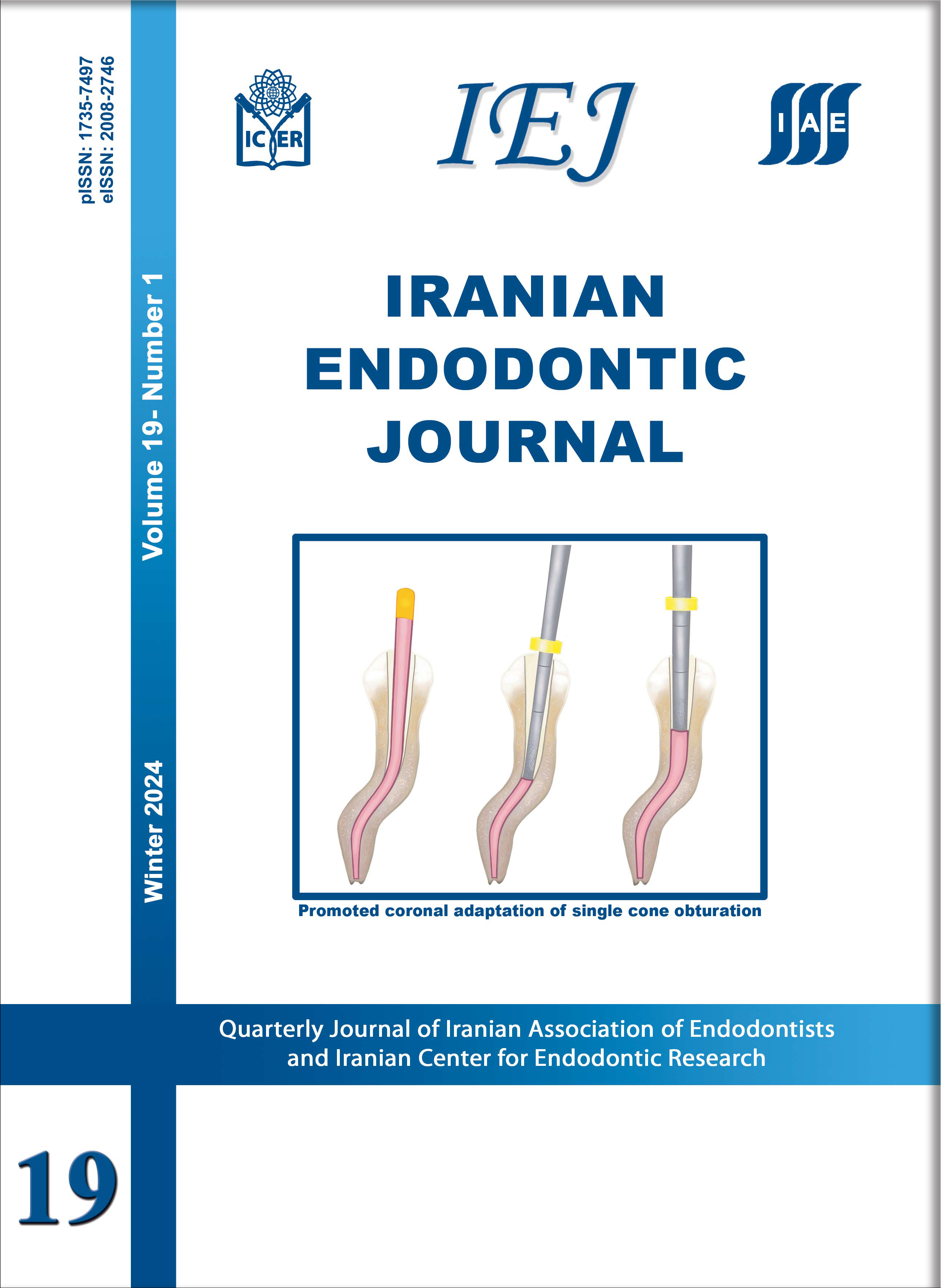Density and apical sealing ability of lateral compaction using two different spreaders and vertical compaction using BeeFill device
Iranian Endodontic Journal,
Vol. 4 No. 1 (2009),
7 Dey 2009
,
Page 10-14
https://doi.org/10.22037/iej.v4i1.1131
Abstract
INTRODUCTION: Proper apical seal and obturation density are essential to long-term success of root canal therapy (RCT). The apical seal and density of lateral compaction techniques using stainless-steel and nickel-titanium spreaders and vertical compaction with BeeFill device were compared in this in vitro study. MATERIALS AND METHODS: A total of 66 extracted maxillary central incisors were instrumented. The volume of each canal was determined after preparation. The weight of each root was measured before and after obturation. Lateral compaction technique was performed using stainless-steel (groups a) and nickel-titanium spreaders (groups b), filled with AH26 sealer (groups 1a and 1b) and without sealer (groups 2a and 2b). Canals in vertical compaction technique (groups c) were filled with (group 1c) and without (group 2c) sealer using Beefill system. Density was determined as the ratio of weight/volume. Sealing ability was evaluated using dye penetration method. Data was analyzed with ANOVA and T-test. RESULTS: T-test results showed a significant difference between groups which were filled with/without sealer for their apical sealing ability (P<0.001), however there was no significant difference in obturation density (P=0.397). ANOVA test showed that there was a significant difference in apical sealing ability among the different experimental groups (P<0.001), while there was no significant difference in density (P=0.456) of obturation. The mean dye leakage for groups using sealer was significantly different to those obturated without sealer. The sealing ability of obturation techniques using sealers were significantly more than those without sealers. CONCLUSION: Under the condition of this in vitro study, density and apical sealing ability of these three obturation methods had no difference. However, the quality of apical seal has improved using AH26 sealer.
- Density
- Instrument
- Nickel-titanium
- Root canal obturation
- Seal
- Stainless-steel
How to Cite
- Abstract Viewed: 231 times
- PDF Downloaded: 265 times




